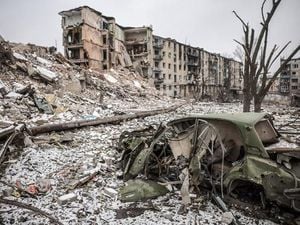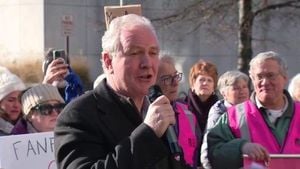On October 22, 2025, Ho Chi Minh City’s top leaders put an end to swirling rumors about another round of administrative reshuffling for the city’s wards and communes. At a high-profile conference summarizing the implementation of Central Party Resolution 18-NQ/TW, Secretary of the Ho Chi Minh City Party Committee, Tran Luu Quang, firmly stated, “There will be no further rearrangement of wards and communes in Ho Chi Minh City in the coming years.” His comments, reported by CafeF, brought clarity and relief to both officials and residents who had been bracing for further changes.
Just a few years ago, the city underwent a major administrative overhaul, merging and adjusting local units to create a more streamlined, efficient government structure. Since July 1, 2025, Ho Chi Minh City has comprised 168 wards, communes, and special zones. However, recent reports pointed out that 48 wards and 4 communes still didn’t meet the required area conditions. This sparked speculation that another wave of restructuring was imminent.
Secretary Tran Luu Quang addressed these concerns directly. He acknowledged that the city faces unique challenges: a dense population and limited land area. “Some criteria related to area cannot be met in specific localities,” he explained, referencing long-standing wards like Saigon, Cau Ong Lanh, Dien Hong, Ben Thanh, Binh Tien, Phu Nhuan, Phu Tho, Duc Nhan, and Gia Dinh. These areas don’t meet the standard size requirements but have special population characteristics that make them exceptions to the rule. “The city has considered many principles and criteria for rearrangement, and the Central Committee has approved this,” Quang emphasized. He called on local officials and civil servants to “focus on their work,” assuring them, “Everyone can be completely at ease.”
This message resonated across the city, especially in localities still adjusting to the recent changes. In Thu Duc Ward, for instance, local leaders shared both progress and ongoing challenges. According to SGGP, on October 22, 2025, Deputy Secretary of the Ho Chi Minh City Party Committee Dang Minh Thong led a task force to Thu Duc Ward to supervise the implementation of Plan 249-KH/UBKTTW by the Central Inspection Committee. The visit revealed that, post-rearrangement, the ward’s headquarters and professional cadre team had stabilized. Yet, not everything was smooth sailing: a group of staff without professional responsibility or expertise would not continue working after May 31, 2026, raising concerns about maintaining momentum and expertise.
Mai Huu Quyet, Secretary of the Thu Duc Ward Party Committee, laid out the ward’s needs: “We propose that Ho Chi Minh City find suitable solutions for the staff and equip machinery and digital transformation tools to ensure stable operations.” He also highlighted an unusual predicament: while Thu Duc boasts a full set of cultural facilities, many are managed by neighboring wards, leaving local authorities unable to fully serve their residents. Quyet urged the city for guidance on establishing new public service units to resolve these management gaps.
Urban order and construction management also remain pressing issues. Thu Duc officials requested that the Department of Construction establish a dedicated inspection team and allow the ward to sign additional contracts with enforcement personnel. Their goal is to ensure urban order and compliance with construction regulations by the city’s December 30, 2025, deadline.
Deputy Secretary Dang Minh Thong took these concerns seriously. He called on city departments to coordinate closely and report solutions to the municipal People’s Committee. Thong also stressed the importance of meeting ambitious political targets, such as recruiting 90 new party members annually for Thu Duc Ward—a high bar that requires careful planning and nurturing of new candidates. “You must focus on identifying sources, compiling lists for training, and developing political and social organizations in local enterprises,” Thong advised. He also reminded officials to strictly implement Regulation 377 of the Political Bureau, which covers cadre management and discipline, and to focus on five core targets: economic growth, state revenue, per capita income, public investment, and poverty reduction.
Zooming out from Ho Chi Minh City, these local developments reflect a broader national trend. At the 10th session of the 15th National Assembly on October 20, 2025, Prime Minister Pham Minh Chinh presented a sweeping summary of Vietnam’s socio-economic progress for 2025 and the preceding five-year period. One of the most striking achievements, as reported by SGGP, has been the government’s resolute streamlining of its own apparatus and the two-level local government system, with a strong emphasis on decentralization and delegation of authority.
After this nationwide administrative reorganization, the government’s structure now consists of 14 ministries and 3 ministerial-level agencies—a reduction of five ministries and three subordinate agencies. The shakeup slashed 13 general departments, 519 departments (a 77.6% reduction), 219 bureaus (down 54.1%), and a staggering 3,303 sub-departments (a 91.7% reduction). Public service units were trimmed by 38%. The administrative cadre of the state shrank by 145,000 people, and ministries and sectors saw their staffing reduced by about 22,000, or 20%.
These changes were not without their challenges. The government report acknowledged that such large-scale, rapid restructuring inevitably led to confusion and uneven implementation in some places. Yet, the overall impact has been positive: regular expenditures have dropped by 39 trillion VND per year, and the government is shifting from a purely administrative management model to one focused on serving the people and fostering development.
For Ho Chi Minh City, this means a period of consolidation and improvement rather than further disruption. Local officials are now tasked with making the most of their current resources, improving the quality of public services, and tackling outstanding issues—like those seen in Thu Duc Ward—head-on. The city’s leadership is also pushing for digital transformation, better urban management, and more effective use of cultural and public assets.
As Vietnam continues its journey towards a more streamlined, modern, and responsive government, the experiences of Ho Chi Minh City offer a window into both the progress made and the hurdles that remain. While the city’s residents can breathe easier knowing that another round of administrative upheaval isn’t on the horizon, the focus now shifts to making sure the existing system works better for everyone. With clear guidance from top leaders and a renewed commitment to efficiency and service, Ho Chi Minh City is poised to navigate the next chapter of its development with confidence and clarity.





